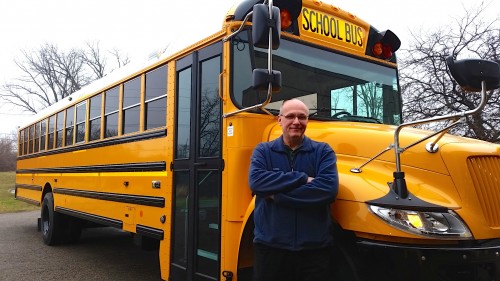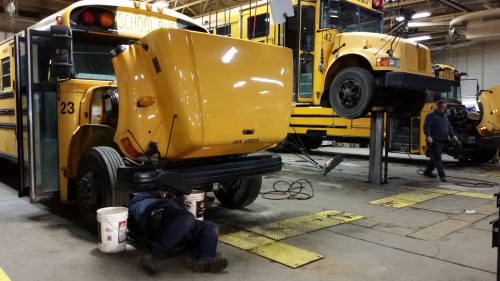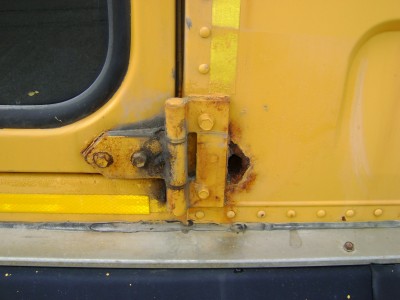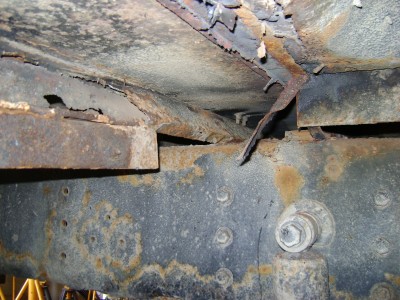
By Jo Mathis
AAPS District News Editor
Michigan’s economy has been all over the map during John Nikolich’s 35-year career keeping AAPS buses up and running.
In healthier times, aging buses were removed from the fleet when they were about seven years old.
Today, 40 percent are more than 10 years old.
So Nikolich is eager to see how voters respond to the May 5 bond proposal. If it’s approved, Ann Arbor Public Schools will sell $33 million worth of bonds to fund capital improvements while the millage remains at or below the current 2.45 mills.
Over the next five years, the district would like to purchase 20 special education buses for $2,200,000, and 96 general education buses for $8,200,000, for a total of $10,400,000.
“Is there a need? Absolutely there is a need,” said Nikolich, sitting in his small office overlooking the maintenance garage, where workers were busy making repairs on busses during spring break.
Nikolich said the maintenance crew is doing everything necessary to keep the buses on the road, and that the fleet just passed a Michigan State Police inspection.
“But we’re basically putting Band-Aids on them to get them to go through at this point, because there’s just simply no way to keep them from the rust and mechanical issues,” he said.
“When you run a fleet of vehicles—whether they be trucks or buses or whatever—it’s imperative to have a replacement schedule.”

He said the biggest issue is keeping up with rust repairs.
Last summer, for instance, the district replaced 26 entire step wells—the area where children step into the bus. And there’s an ongoing issue with broken, rusted cross members that hold the body to the chassis, rub rails along the sides of the bus, and rotting emergency doors.
“Some of our buses are getting to the point where they’re so old, and Michigan is so hard on them with the salt, roads and weather, that we can repair several cross members underneath a bus, bring it in on its next preventive maintenance cycle, and find several additional cross members broken,” he said. “Rust has eaten the metal to the point that the structure of the bus floor is weakened.”

Improved student safety would be the most important result of a bond passage, Nikolich said.
The new buses would be equipped with GPS tracking systems and cameras. And the seats have been redesigned so they’re taller and provide better protection in case of a crash.
Another likely option is traction control, which is not featured on any of the current buses.
Nikolich said diesel engine buses today produce about 90 percent less emissions than the oldest buses in the current fleet, and the new buses get about 30 percent better fuel economy. Last year, the average AAPS bus got about seven miles per gallon.
The district’s newest buses went into service in September of 2009. Because bus routes have become more efficient, the district plans to reduce its fleet of 129 buses now that fewer spare buses are needed.
Maintenance costs have risen while reliability has decreased, with more aging buses breaking down, Nikolich said.
“We don’t want to leave any kids waiting for their bus to arrive because it broke down. Especially in inclement weather,” he said. “We pride ourselves in trying to provide safe, reliable transportation. And the buses aging to the point that they have has really made that a much more difficult task.”
Functional, well-maintained and high-performing schools are a clear indicator of the health and vibrancy of a community, says Superintendent Jeanice Swift.
“Investing in maintaining our physical properties is both a community priority and our shared responsibility,” she says. “Keeping our schools updated in sound working order and ensuring their sustainable places to deliver education both for today’s students and for the generations to come pays forward the public trust that has been provided to us by those who came before.”



Is there a way to push to get 3 point seat belts on every new school bus purchased? Seat belts save lifes but our buses do not have them…